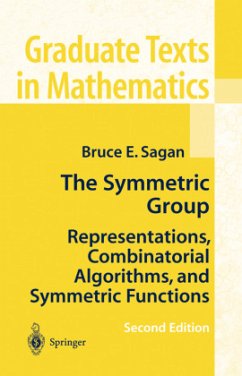
Representation Theory of the Symmetric Groups
Versandkostenfrei!
Versandfertig in 1-2 Wochen
113,99 €
inkl. MwSt.
Weitere Ausgaben:

PAYBACK Punkte
57 °P sammeln!
The representation theory of the symmetric groups is a classical topic that, since the pioneering work of Frobenius, Schur and Young, has grown into a huge body of theory, with many important connections to other areas of mathematics and physics. This self-contained book provides a detailed introduction to the subject, covering classical topics such as the Littlewood-Richardson rule and the Schur-Weyl duality. Importantly the authors also present many recent advances in the area, including Lassalle's character formulas, the theory of partition algebras, and an exhaustive exposition of the appr...
The representation theory of the symmetric groups is a classical topic that, since the pioneering work of Frobenius, Schur and Young, has grown into a huge body of theory, with many important connections to other areas of mathematics and physics. This self-contained book provides a detailed introduction to the subject, covering classical topics such as the Littlewood-Richardson rule and the Schur-Weyl duality. Importantly the authors also present many recent advances in the area, including Lassalle's character formulas, the theory of partition algebras, and an exhaustive exposition of the approach developed by A. M. Vershik and A. Okounkov. A wealth of examples and exercises makes this an ideal textbook for graduate students. It will also serve as a useful reference for more experienced researchers across a range of areas, including algebra, computer science, statistical mechanics and theoretical physics.














